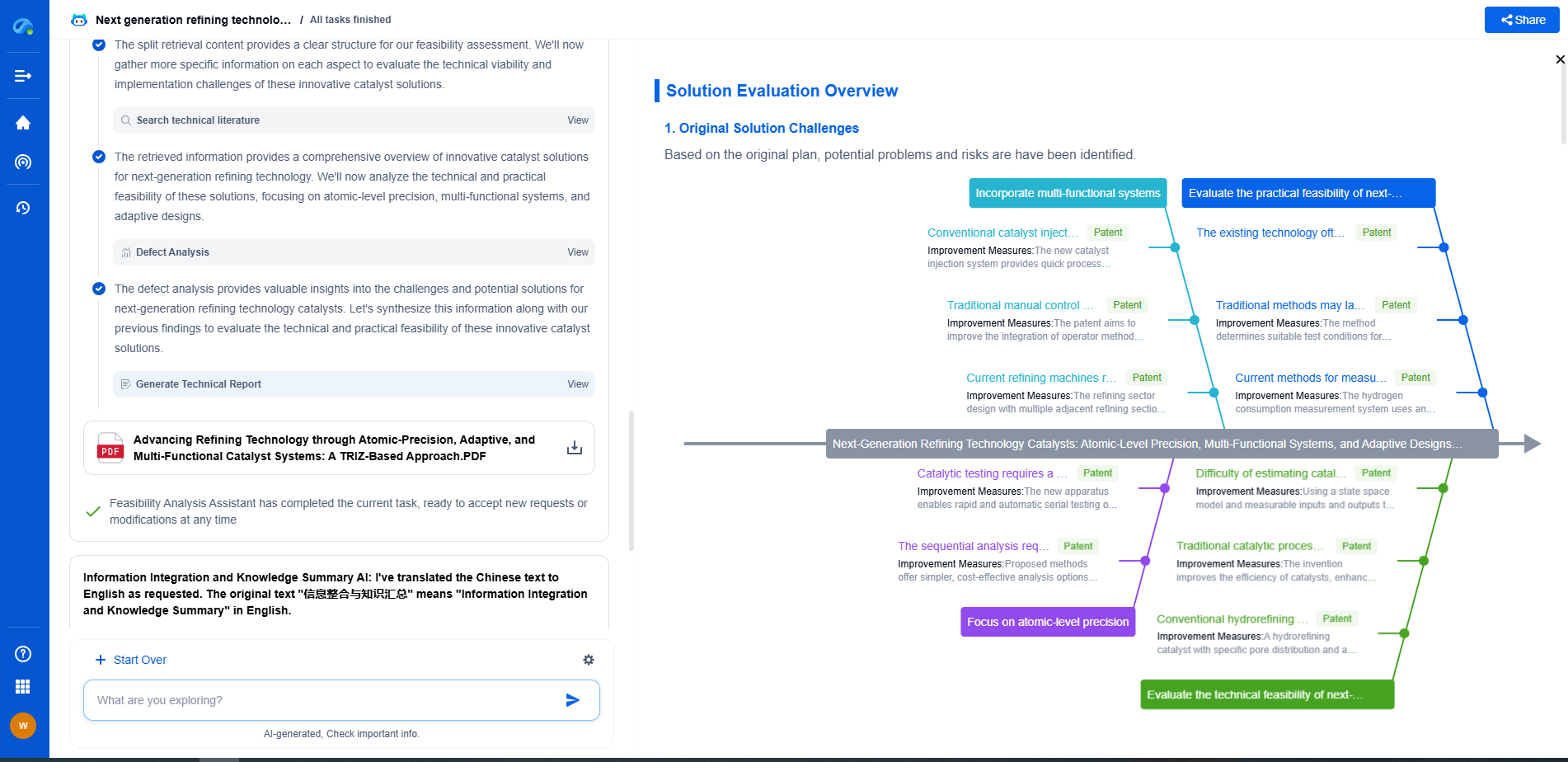Adaptive optics in laser beam control: Benefits and applications
JUN 26, 2025 |
Adaptive optics is a sophisticated technology primarily used to enhance the performance of optical systems by reducing the distortions that occur as light travels through different media. In laser beam control, adaptive optics plays a crucial role by precisely adjusting the path and focus of laser beams, thus ensuring high-quality performance across various applications. This blog will delve into the benefits and applications of adaptive optics in laser beam control, illustrating how it revolutionizes numerous fields.
**The Benefits of Adaptive Optics in Laser Beam Control**
One of the most significant benefits of adaptive optics in laser beam control is its ability to correct wavefront distortions in real-time. This capability is critical in applications requiring high precision, such as laser communication, laser machining, and medical laser treatments. By compensating for atmospheric turbulence, thermal variations, and other optical aberrations, adaptive optics ensures that the laser beam maintains its quality, coherence, and focus, even over long distances.
Another major advantage is the enhancement of resolution and imaging quality. In astronomical telescopes using laser guide stars, adaptive optics compensates for atmospheric distortions, allowing astronomers to capture clearer and more detailed images of celestial objects. Similarly, in microscopy and medical imaging, adaptive optics improve the clarity and accuracy of the images, enabling better diagnostics and research outcomes.
Additionally, adaptive optics increases the efficiency and effectiveness of laser systems. By optimizing the laser beam's focus and intensity, the technology reduces energy wastage and enhances the performance of laser-based systems. This leads to cost savings and improved results in industrial applications like materials processing and manufacturing.
**Applications of Adaptive Optics in Laser Beam Control**
In the field of astronomy, adaptive optics has become an indispensable tool. Observatories worldwide utilize this technology to counteract the blurring effects of Earth's atmosphere, allowing telescopes to achieve near-diffraction-limited imaging. The implementation of adaptive optics systems has led to breakthroughs in our understanding of the universe, from detailed studies of distant galaxies to the discovery of exoplanets.
In the medical field, adaptive optics is employed in retinal imaging and laser eye surgery. By providing high-resolution images of the retina, adaptive optics aids in early diagnosis and treatment of eye diseases such as glaucoma and macular degeneration. In laser eye surgery, adaptive optics ensures precise control of the laser beam, enhancing the safety and effectiveness of procedures like LASIK.
The defense and security sectors also benefit from adaptive optics in laser beam control. Military systems use this technology for directed energy weapons, where maintaining the focus and power of laser beams is crucial for targeting and neutralizing threats. Adaptive optics enhance the reliability and accuracy of these systems, providing a significant advantage in defense operations.
In telecommunications, adaptive optics improve the performance of free-space optical communication systems. By stabilizing the laser beams used to transmit data, adaptive optics mitigate the effects of atmospheric disturbance, ensuring reliable and high-speed data transfer over long distances.
**Challenges and Future Prospects**
Despite its numerous benefits, the implementation of adaptive optics systems comes with challenges. The technology requires precise instrumentation and complex algorithms to function effectively, often leading to high costs and demanding maintenance. Nevertheless, ongoing research and technological advancements are gradually overcoming these hurdles, making adaptive optics more accessible and cost-effective.
The future of adaptive optics in laser beam control is promising, with potential applications extending into emerging fields such as quantum optics and artificial intelligence. As technology continues to evolve, adaptive optics will likely play an increasingly pivotal role in enhancing the capabilities of laser systems across diverse industries.
**Conclusion**
Adaptive optics is a transformative technology in the realm of laser beam control, offering substantial benefits and wide-ranging applications. From improving the clarity of astronomical observations to enhancing the precision of medical procedures, adaptive optics is revolutionizing how we harness the power of lasers. As challenges are addressed and new advancements emerge, the impact of adaptive optics is poised to grow, heralding a new era of innovation and discovery.
Empower Electromagnetic Innovation with Patsnap Eureka
From high-frequency antenna arrays and electromagnetic shielding to plasma propulsion and wave-based energy transfer, the electromagnetic domain sits at the core of next-generation technologies. Yet navigating its vast landscape of patents, research papers, and evolving technical standards can be time-consuming and complex.
Patsnap Eureka, our intelligent AI assistant built for R&D professionals in high-tech sectors, empowers you with real-time expert-level analysis, technology roadmap exploration, and strategic mapping of core patents—all within a seamless, user-friendly interface.
👉 Experience Patsnap Eureka today and transform how your team navigates the complexity of electromagnetic innovation.
- R&D
- Intellectual Property
- Life Sciences
- Materials
- Tech Scout
- Unparalleled Data Quality
- Higher Quality Content
- 60% Fewer Hallucinations
Browse by: Latest US Patents, China's latest patents, Technical Efficacy Thesaurus, Application Domain, Technology Topic, Popular Technical Reports.
© 2025 PatSnap. All rights reserved.Legal|Privacy policy|Modern Slavery Act Transparency Statement|Sitemap|About US| Contact US: help@patsnap.com

